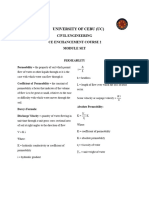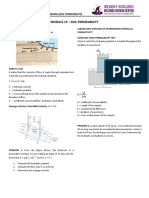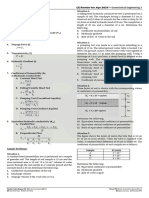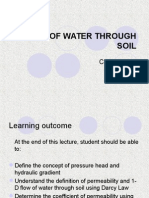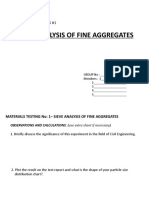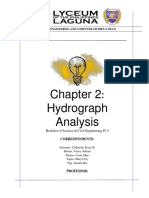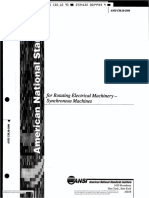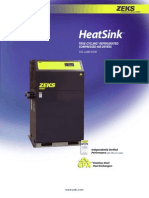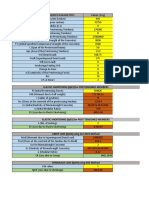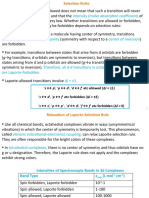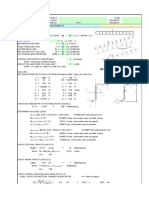0% found this document useful (0 votes)
261 views6 pagesProblemset
1. The document provides problems related to classifying soil samples using the AASHTO classification system and determining group indices.
2. It also includes problems calculating coefficients of permeability from pumping well tests and constant head permeability tests using data on drawdowns, discharge rates, sample sizes and water collected.
3. Additional problems involve calculating hydraulic conductivity, discharge velocity, volume through a soil sample, head differences and heights of water levels from constant head and falling head permeability test data.
Uploaded by
Maryll TapiaCopyright
© © All Rights Reserved
We take content rights seriously. If you suspect this is your content, claim it here.
Available Formats
Download as DOCX, PDF, TXT or read online on Scribd
0% found this document useful (0 votes)
261 views6 pagesProblemset
1. The document provides problems related to classifying soil samples using the AASHTO classification system and determining group indices.
2. It also includes problems calculating coefficients of permeability from pumping well tests and constant head permeability tests using data on drawdowns, discharge rates, sample sizes and water collected.
3. Additional problems involve calculating hydraulic conductivity, discharge velocity, volume through a soil sample, head differences and heights of water levels from constant head and falling head permeability test data.
Uploaded by
Maryll TapiaCopyright
© © All Rights Reserved
We take content rights seriously. If you suspect this is your content, claim it here.
Available Formats
Download as DOCX, PDF, TXT or read online on Scribd
/ 6

